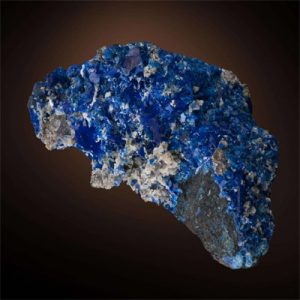Diaboleite
Diaboleite is named through the Greek word dia, meaning distinct from, and Boleite, in allusion to its difference from Boleite. Diaboleite is a blue-coloured mineral with formula Pb2CuCl2(OH)4. Boleite is known as for the kind locality, Boleo, near Santa Rosalia, Baja California. Despite being “distinct from” Boleite, Diaboleite is closely related to Boleite. It is also closely regarding Pseudoboleite (“false” Boleite) and Cumengeite. All four minerals are secondary copper minerals. They are also Halide minerals. The Halides certainly are a combined group of minerals whoever principle anions are halogens. Halogens are a group that is special of that usually have actually a fee of negative one when chemically combined. The halogens being commonly found in nature include Fluorine, Chlorine, Iodine and Bromine. Halides tend to have fairly simply ordered structures, therefore, a diploma that is high of.
Locations for Diaboleite: In England, at the Higher Pitts Farm, Mendip Hills, and the Morehead quarry, near Shepton Mallet, Somerset; at Padstow Consols, Padstow, Cornwall. In Germany, through the Christian-Levin mine, near Essen, North Rhine-Westphalia, and from Richelsdorf, Hesse, in slag. Along Baratti Beach, Tuscany, Italy, in slag. At Laurium, Greece, in slag. In the USA, exceptional crystals from the Mammoth-St. Anthony mine, Tiger, Pinal County, and through the Rowley Mine, Maricopa County, Arizona. In Iran, in the Tchah Khuni as well as other mines within the Anorak district; the Seh-Changi mine, near Neyland, Khorassan; as well as Abdol Abad, Tabas. From Moolyella, and at the Anticline prospect, 11 km west-southwest of Ashburton Downs homestead, Capricorn Range, Western Australia. Within the Santa Ana mine, Caracoles, Sierra Gorda district, Chile. Found at an locality that is undefined the Kopet- Dag Range, Cheleken Peninsula, Russia.
| Category: | Halide mineral |
| Chemical Formula: | Pb2CuCl2(OH)4 |
| Lead Copper Chloride Hydroxide | |
| Molecular Weight: | 616.88 gm |
| Composition: | Copper | 10.30 % | Cu | 11.60 % | Cu2O |
| Hydrogen | 0.65 % | H | 5.84 % | H2O | |
| Lead | 67.18 % | Pb | 72.36 % | PbO | |
| Chlorine | 11.49 % | Cl | 11.49 % | Cl | |
| — | – % | Cl | -2.59 % | -O=Cl2 | |
| Oxygen | 10.37 % | O | |||
| 100.00 % | 98.70 % | = TOTAL OXIDE |
| Crystallography: | Tetragonal – Ditetragonal Pyramidal |
| Crystal Habit: | Crystals tabular on {001}, exhibiting square or octagonal outline with vicinal forms, rarely showing pyramidal hemihedralism, to 2 em; in subparallel aggregates; massive. |
| Twinning: | None |
| Cleavage: | Perfect on {001} |
| Fracture: | Conchoidal |
| Tenacity: | Brittle |
| Moh’s Hardness: | 2.5 |
| Density: | 5.41 – 5.43 (g/cm3) |
| Luminescence: | None |
| Radioactivity: | Not Radioactive |
| Other: | Completely soluble in nitric acid. |
| Color: | Deep blue; pale blue in transmitted light |
| Transparency: | Transparent to Translucent |
| Luster: | Adamantine, pearly on cleavages |
| Refractive Index: | 1.850 – 1.980 Uniaxial ( – ) |
| Birefringence: | 0.130 |
| Dispersion: | n/a |
| Pleochroism: | None |


